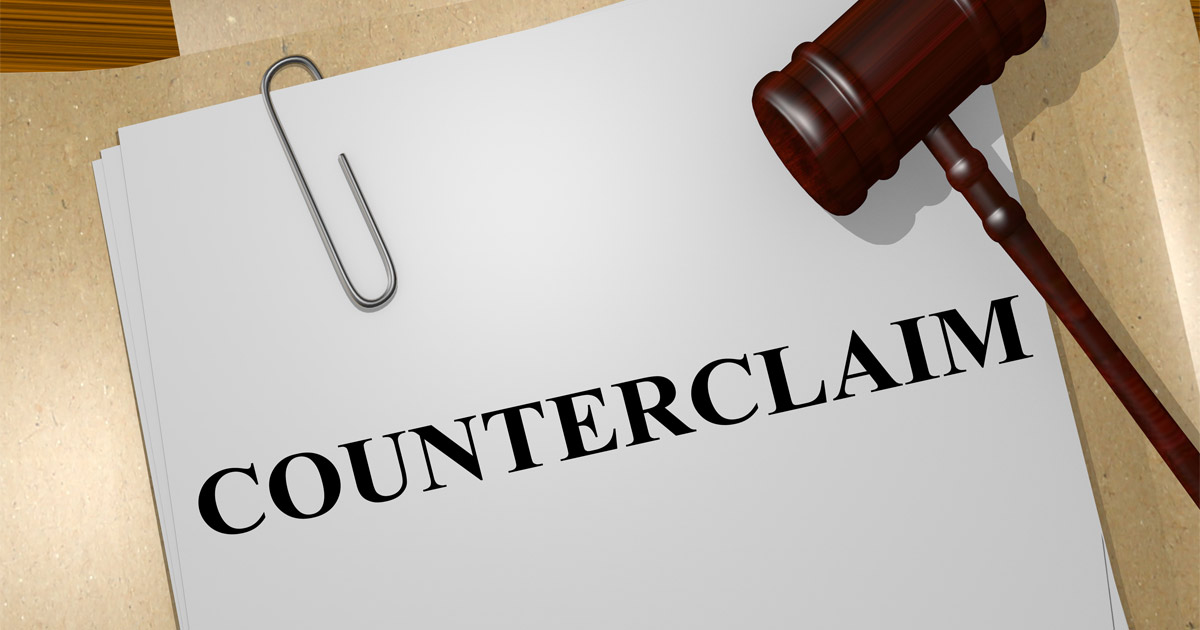Like many types of incidents that involve legal disputes, car accidents often involve multiple perspectives. When it is not clear which driver was at fault, the parties involved often turn to the judicial system to sort things out.
If one was in a car accident and the other driver believes they did not cause it, one may be hit with a lawsuit in which the other driver seeks compensation for property damage or for a personal injury. If one disagrees about who was to blame for the accident, one may consider a counterclaim to make a case against the other driver.
What is a Counterclaim?
A counterclaim is a legal claim made by a defendant in a civil lawsuit. The counterclaim establishes that the defendant in question disputes the premise of the initial claim and instead holds that the initial plaintiff is actually at fault.
For example, Driver A believes that Driver B caused the accident. Driver B believes the opposite. Driver A sues Driver B for damages, such as reimbursement for medical bills related to an injury suffered in the accident. Driver B feels that they bear no responsibility for the accident, so they decide to countersue to claim their own damages and to protect themselves.
How are Counterclaims Different from Typical Lawsuits?
A counterclaim is different from a simple lawsuit because it is a response to an initial claim. The initial claim by the initial plaintiff is at the center of the counterclaim. The initial defendant in turn has a legal interest in not only defending their interests in the initial claim, but also in pursuing damages in the subsequent counterclaim.
In a counterclaim lawsuit, the same set of circumstances are at the heart of the dispute. In the previously mentioned car accident example, both the initial lawsuit and the countersuit stem from the same incident.
Car Insurance and Counterclaims
Often, in a car accident counterclaim, it is the car insurance company that files a counterclaim in response to an initial claim. Sometimes, the driver wants to pursue a counterclaim, but the insurance company declines to do so. The individual may do so on their own.
How Do I File a Counterclaim?
The first step in filing a counterclaim is to receive a complaint and summons naming oneself as a defendant in the original case. If a driver and their insurance provider decides that a counterclaim is appropriate, they must respond to the court with the request to file a counterclaim. Deadlines and other rules for filing apply to counterclaims.
Once both the initial claim and the counterclaim are established, the case moves on to the discovery phase where both sides investigate the claims made against each other.
What Happens in Court?
The court will hear the arguments of both the initial claim and the counterclaim in the same proceeding. The original plaintiff will present their case. After that, the defendant will defend against the allegations against them and make their case as well. Then, the plaintiff will get a chance to respond to the accusations presented by the defendant.
In an independent lawsuit that does not involve a countersuit, the court decides if the defendant is negligent and awards appropriate damages to the plaintiff.
In a lawsuit that involves a counterclaim, however, the court will determine what amount of fault falls with each participant and will award damages based on that calculation.
Retaining a Lawyer
Car accident cases can be difficult to navigate, so it is important to hire a lawyer after an accident, especially if one is wishing to file a counterclaim. A lawyer will help their client file a claim and gather evidence for the case.
Brooklyn Car Accident Lawyers at Eaton & Torrenzano Assist Drivers with Counterclaims
If you have been sued for damages by the person responsible for your accident, you should speak to a law professional about your options for filing a countersuit. Our Brooklyn car accident lawyers at Eaton & Torrenzano protect their clients against reckless drivers. For a free consultation, contact us online or call us at 718-332-7766. Located in Brooklyn and Staten Island, New York, as well as Hillsborough, New Jersey, we serve clients throughout Kings County and Richmond County, including Brooklyn, Queens, Staten Island, the Bronx, and Manhattan.








